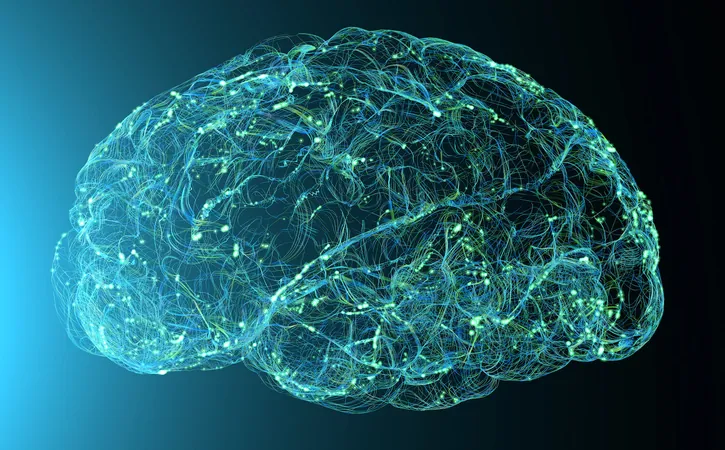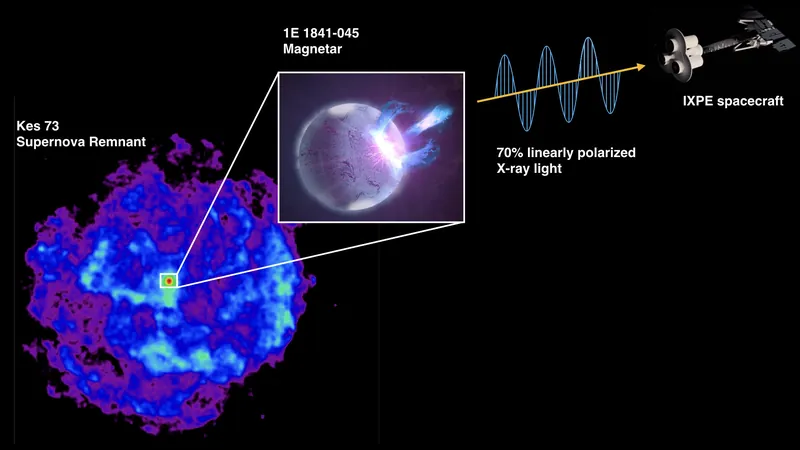
Unlocking the Secrets of the Brain: Revolutionary Light Microscopy Method Revealed
2025-05-07
Author: Ming
A Breakthrough in Brain Research
Imagine delving deep into the mysteries of the human brain, a tangled maze of billions of nerve cells intricately interconnected, processing our memories and movements. A groundbreaking new technique—light-microscopy-based connectomics (LICONN)—promises to reveal the brain's complex circuitry like never before. Developed by a collaborative team from the Institute of Science and Technology Austria (ISTA) and Google Research, this innovative method may finally solve the riddle of brain tissue reconstruction.
What Makes LICONN Unique?
Unlike traditional approaches, LICONN merges conventional light microscopy with cutting-edge technology, such as hydrogel properties, artificial intelligence, and advanced analysis. This innovative combination allows LICONN to reconstruct brain tissues with unparalleled detail, capturing not only the neurons but also the synaptic connections that weave them into a cohesive network.
Lead researcher Johann Danzl and his team published their findings in the prestigious journal Nature, highlighting their achievement in achieving synaptic-level resolution with a light microscope—something previously considered impossible beyond electron microscopy.
The Science Behind the Technology
LICONN’s brilliance lies in its creative use of hydrogel, a unique three-dimensional polymer that expands under controlled conditions. By embedding brain tissues in this hydrogel, researchers maintain the structural integrity of the neurons while increasing their size, allowing high-resolution imaging of cellular components. This revolutionary technique enhances standard light microscopy resolution by a staggering 16 times, achieving clarity down to 20 nanometers—much smaller than a human hair!
Delving Deeper into Neuronal Connectivity
Determining how neurons connect is crucial for understanding brain function. LICONN effectively 'pulls apart' these vast webs of synapses, enabling precise mapping of connections between neurons. Danzl emphasizes that this method not only reconstructs structures but also places molecular activity within the context of neural architecture—an unprecedented feat.
Artificial Intelligence Meets Neuroscience
As LICONN generates vast amounts of data, manually analyzing these intricate structures would be overwhelming. Enter Google Research’s advanced deep-learning algorithms, which have been trained to automatically segment and identify neuronal shapes and connections. This automation transforms the daunting task of reconstructing complex neuronal networks into achievable segments, shedding light on the electronic chatter of our brains.
The Future of Connectomic Studies
With its ability to seamlessly integrate specific molecular data into neuronal maps, LICONN not only enhances neuroscientific research but also paves the way for applications in other complex tissue structures. The method's simplicity allows it to be adopted in laboratories worldwide, democratizing access to high-resolution connectomic studies.
A Vision for Tomorrow
Ultimately, LICONN brings us closer to piecing together the puzzle of mammalian brain function, aiding our understanding of health and disease. As Danzl concludes, this pioneering technology offers a thrilling glimpse into the future of neuroscience, where complex structural analyses can lead to groundbreaking discoveries across various biological systems.




 Brasil (PT)
Brasil (PT)
 Canada (EN)
Canada (EN)
 Chile (ES)
Chile (ES)
 Česko (CS)
Česko (CS)
 대한민국 (KO)
대한민국 (KO)
 España (ES)
España (ES)
 France (FR)
France (FR)
 Hong Kong (EN)
Hong Kong (EN)
 Italia (IT)
Italia (IT)
 日本 (JA)
日本 (JA)
 Magyarország (HU)
Magyarország (HU)
 Norge (NO)
Norge (NO)
 Polska (PL)
Polska (PL)
 Schweiz (DE)
Schweiz (DE)
 Singapore (EN)
Singapore (EN)
 Sverige (SV)
Sverige (SV)
 Suomi (FI)
Suomi (FI)
 Türkiye (TR)
Türkiye (TR)
 الإمارات العربية المتحدة (AR)
الإمارات العربية المتحدة (AR)